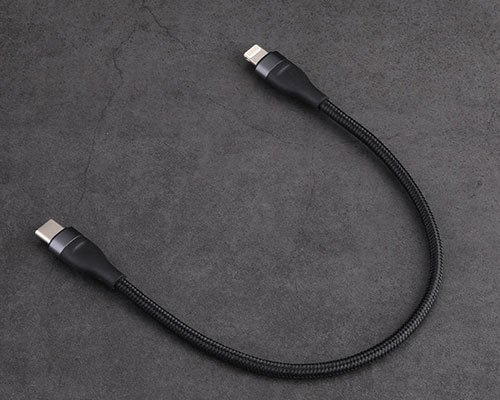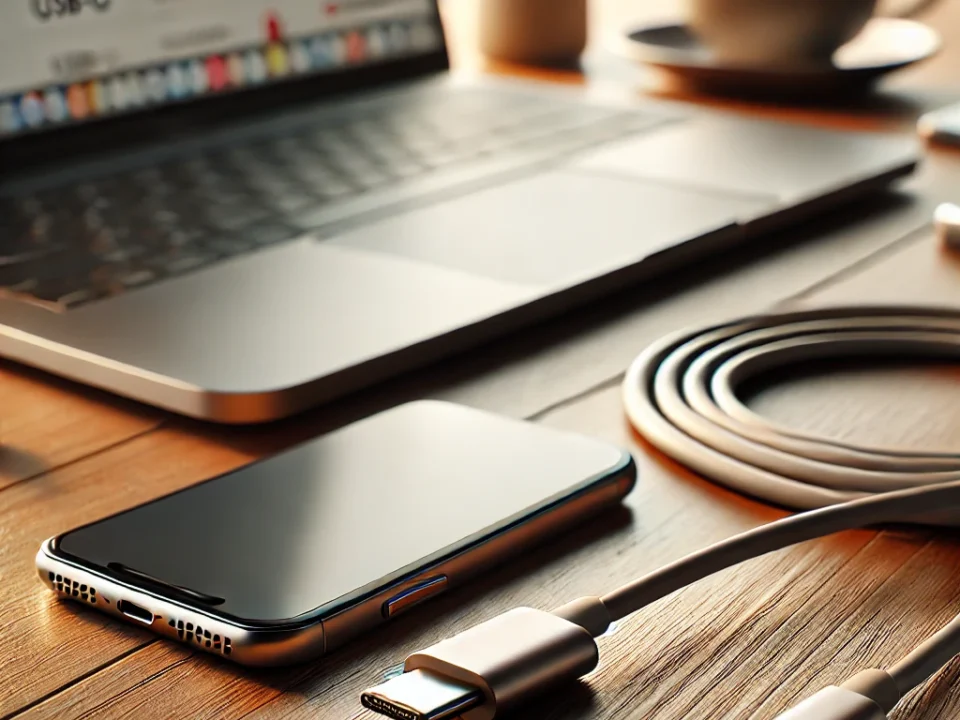
Tech Pro Insight: Do All USB-C Cables Support Data Transfer?
2024-12-04
Do All USB-C Cables Support Fast Charging? Understanding the Facts
2024-12-05Understanding USB-C to Lightning Cables
USB-C to Lightning cables are specialized connectors developed to enhance connectivity between Apple’s devices and an array of peripherals. Unlike traditional USB cables, which typically come equipped with the older USB-A or USB-B interfaces, these cables integrate USB-C technology, marking a significant advancement in how devices communicate and charge. The USB-C connector not only features a reversible design, making it user-friendly, but it also supports higher power delivery and substantial data transfer rates.
The relevance of USB-C to Lightning cables within the Apple ecosystem cannot be overstated. They are essential for users who own products like iPhones, iPads, and Macs, as they enable fast charging and efficient data synchronization. Within a matter of hours, one can charge an iPhone capable of fast charging up to 50% battery life in just 30 minutes with a USB-C to Lightning cable. This capability is particularly beneficial for individuals leading a fast-paced lifestyle, where every minute counts.
Recent advancements in USB technology have contributed significantly to the popularity of USB-C connections. Increased demand for faster charging speeds aligns with the emergence of USB Power Delivery (USB-PD), which allows for higher wattage charging. USB-C cables can offer up to 100 watts of power, supporting a wide range of devices beyond Apple products, including laptops and accessories. Additionally, the enhancements in data transfer rates allow for quicker synchronization of large files, making these cables invaluable for creative professionals and everyday users alike.
To summarize, USB-C to Lightning cables provide efficient and robust solutions for charging and data transfer within the Apple ecosystem. Their development signifies a shift towards more versatile and powerful connectivity options, benefitting a myriad of users across various applications.
Speed: Charging and Data Transfer Capabilities
The advent of USB-C to Lightning cables has revolutionized the way we charge and transfer data between devices. One of the most significant advantages of these cables is the increased speed associated with both charging and data transfer. While traditional USB connections are limited in their capabilities, USB-C technology offers the potential for much greater power delivery and efficiency. High-quality USB-C to Lightning cables, such as the Apple 14 PD20W Type-C data cable, can support power delivery up to 100W, allowing for rapid charging that can significantly reduce the time needed to recharge devices, especially larger gadgets like laptops and tablets.
When evaluating the charging speeds, it is crucial to consider that USB-C connectors are designed to deliver more power compared to their USB-A counterparts. This increased power delivery not only accelerates charging times but also enables users to efficiently charge multiple devices simultaneously without compromising on speed. For professionals and content creators who often rely on their devices for day-to-day operations, having a reliable USB-C to Lightning cable can streamline workflows by ensuring that devices are charged quickly between tasks.
Data transfer capabilities are also a vital consideration for anyone who frequently handles large files. USB-C to Lightning cables typically support faster data transfer rates compared to standard USB cables. While USB 2.0 offers a maximum transfer speed of 480 Mbps, the USB 3.0 standard, which is commonly integrated into USB-C connections, can reach speeds of up to 5 Gbps or even higher in the case of USB 3.1 and beyond. For content creators, this means transferring large video files or high-resolution images can be accomplished in a fraction of the time compared to older connection types, enhancing productivity and ensuring that workflows remain efficient.
Durability: What to Look for in a Quality Cable
When selecting a USB-C to Lightning cable, durability is a fundamental aspect to consider. A cable’s longevity is influenced by various factors, including the quality of materials used, design features, and connector strength. High-quality cables, such as the Apple 14 PD20W Type-C data cable, often utilize robust materials like reinforced nylon or braided designs. These features not only enhance resistance to wear but also prevent fraying and tangling, ensuring long-term reliability. In contrast, low-quality cables, typically made from flimsy plastic, are prone to breaking or losing functionality over time.
Another crucial element in assessing durability is the design of the connector. Cables equipped with strain relief, where the connector meets the cable, demonstrate improved durability by reducing the stress on the wire during use. This area is often the most vulnerable, making it essential that well-constructed options feature strong, well-integrated connectors that can withstand frequent plugging and unplugging.
While examining cables, potential buyers should also consider certifications such as Apple’s MFi (Made for iPhone/iPad) certification. This standard ensures that the cable has been tested for safety and performance, thus minimizing the risk of issues like overheating or malfunctioning. Cables that lack this certification may not deliver the same reliability, exposing users to further risks.
Real-world scenarios accentuate the importance of choosing the right cable. For instance, a frequent traveler would benefit from a durable cable that can endure the rigors of being packed tightly in luggage or being used in various environments without suffering damage. By taking into account material quality, design features, and certifications, consumers can make informed decisions that ultimately lead to better long-term performance and value in their USB-C to Lightning cable purchases.
Top Recommendations and Buying Tips
When selecting the best USB-C to Lightning cable for your needs, various options stand out in terms of speed, durability, and performance. If you are looking for a reliable choice, the Apple 14 PD20W Type-C data cable is an excellent option. Designed with durability and performance in mind, this cable supports fast charging and data transfer speeds of up to 480 Mbps. Its sturdy construction ensures long-term reliability, making it a valuable addition to your tech accessories.
For users seeking a mid-range option, the Belkin Boost Charge USB-C to Lightning cable is worth considering. This cable not only supports fast charging but also comes with a sleek design and reinforced connectors for improved durability. It is certified by Apple, ensuring compatibility with a variety of devices. While it may be slightly pricier than the Anker option, the performance justifies the investment.
On the premium end of the spectrum, the Apple USB-C to Lightning cable stands out for its exceptional reliability and compatibility with a wide range of Apple devices. It supports fast charging up to 20W and data transfer rates that meet industry standards. The downside to this cable, however, is its price tag, which might be a consideration for budget-conscious users.
When purchasing a USB-C to Lightning cable, it is crucial to verify compatibility with your devices, as not all cables support the same features. Additionally, pay attention to the cable length; longer cables provide flexibility, but shorter cables are often easier to manage for charging on the go. Always check for warranty details, as a good warranty can provide peace of mind. Lastly, buy from reputable retailers to ensure product authenticity and avoid counterfeit products. With these recommendations and buying tips, you can make an informed decision tailored to your specific requirements.
Reference Website:Best USB-C to Lightning Cable – Our Top Recommendations











